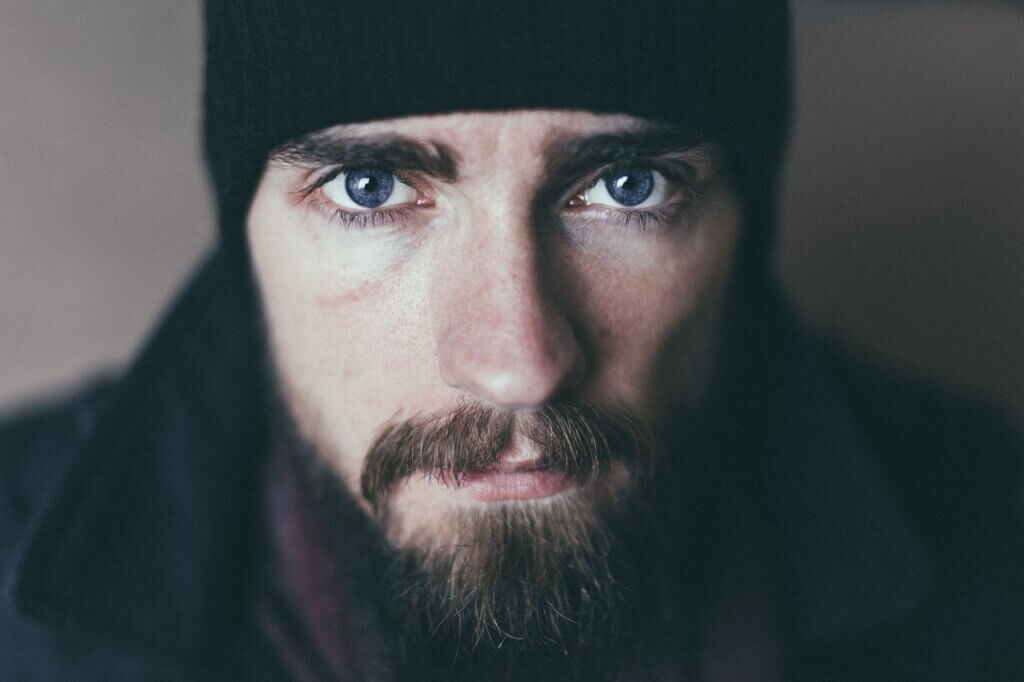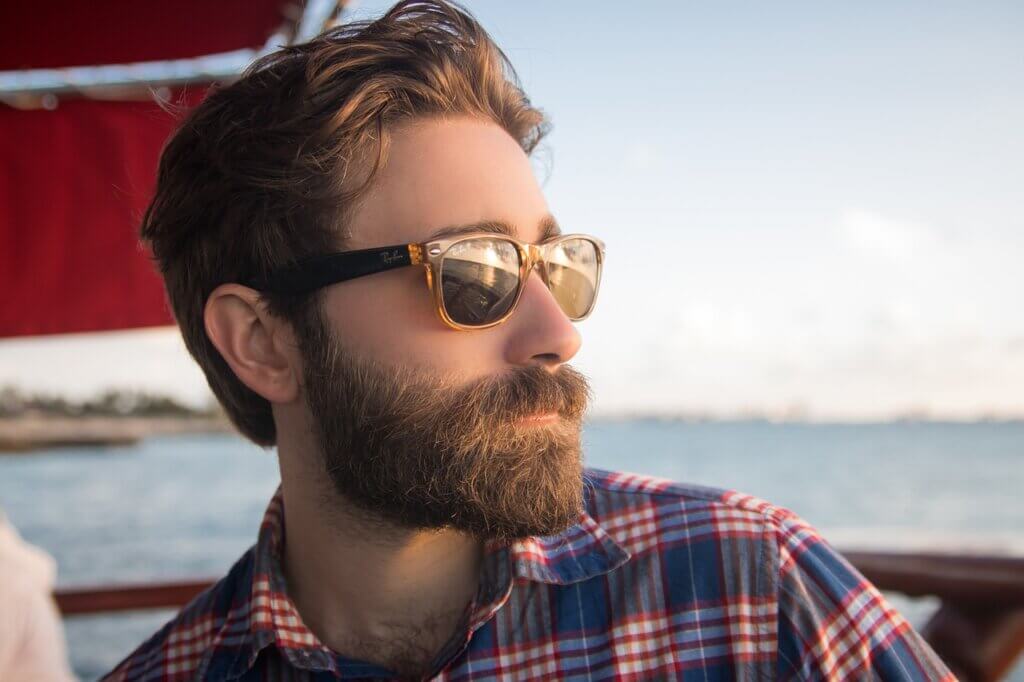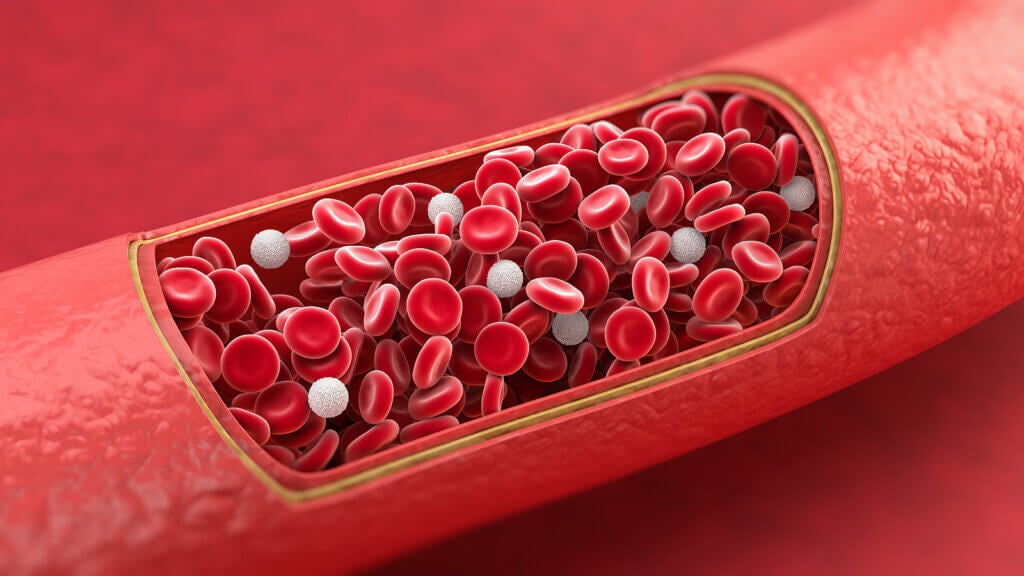Pogonophilia: The Attraction to Bearded Men

Trends change rapidly. What’s popular today will cease to be so tomorrow, following an endless cycle. One trend that has persisted for several decades is that of the male beard. And this has given rise to what’s known as pogonophilia, the attraction to bearded men.
Pogonophilia is a term that’s made up of the Greek words pogon (beard) and philos (lover or beloved). It alludes to the attraction felt for male beards, which is often intense. It’s an attraction that manifests itself on erotic, emotional, and sexual levels. It’s the opposite of pogonophobia, which refers to the fear of men with beards.
Characteristics of pogonophilia
Although pogonophilia is a word that’s become known in recent years, in reality, the idea to which it refers is very old. Various civilizations have associated the male beard with a certain physical attractiveness or with power, authority, and superiority.
The Internet and fashion trends of the present century have made people find that their attraction to the male beard is something they share with others. The lubersexual movement, for example, takes advantage of fashion and the media to proclaim the attractiveness of men with beards.
Be that as it may, this appeal manifests itself in different ways. It can be just a passing interest, an intense attraction, and even arouse excitement and pleasure. If the latter is the case, pogonophilia could be closer to a type of paraphilic disorder.
Pogonophilia can condition the way men and women manage their social relationships. For example, they may establish romantic and sexual relationships exclusively with bearded men and sympathize with groups of friends who grow facial hair. In and of itself, it’s not a harmful trend, but it’s interesting from a scientific point of view.

How is pogonophilia explained?
There are many theories as to why some people are attracted to bearded men. Although it develops with different degrees of interest, most cases are associated with feelings of great intensity. That is, the attraction is excessive, uncontrollable, and can even lead to obsession.
This behavior can be explained in different ways, such as through disorders. But today, we’ll consider the way in which male facial hair can be associated with eroticism, beauty, and health.
Beards as a symbol of dominance
A study published in 2017 in Adaptative Human Behavior and Physiology compared the subjective opinions of a group of participants when evaluating clean-shaven, stubbled, and full-beard faces. By consensus, full beards were associated with more explicit social dominance.
That is, men with beards are considered more dominant, more powerful, stronger, and as having opinions of authority. In cases of pogonophilia, this can be associated with greater protection and security when entering a relationship or greater sexual pleasure. It could also be associated with hybristophilia.
Masculinity, health, and beauty
A study published in Evolution and Human Behavior in 2013 investigated the subjective perceptions of a group of people about beards regarding masculinity, health, and beauty. The results were the following:
- Women attach a more attractive value to beards.
- Men rate full or abundant beards as more attractive.
- Full beards are interpreted by men and women as a greater capacity for parenting and better health.
- A greater degree of masculinity is associated with beards that are denser.
Therefore, male facial hair could be a social predictor of masculinity, beauty, and health. Another study found that the male beard is valued by many people when there are intentions to establish a long-term relationship. When the intentions are short-term, there’s much less interest.

Beards as a mediator of sexual interest
A study published in 2015 in the Archives of Sexual Behavior explored the role of body and facial hair distribution regarding its relationship to women’s sexual interest. It found that men with uniform facial hair were perceived as being of greater sexual interest than those with uneven beards.
Another study conducted 2 years later, in 2017, evaluated the sexual interest on the part of heterosexual women and homosexual men with respect to facial and body hair. In general, the more hair, the more sexual interest. So, pogonophilia can also be explained through these results.
The attraction to bearded men doesn’t have to be obsessive
Sometimes, there’s no apparent cause for this attraction, and it’s not always associated with sexual behavior or expectations. Male sexual hair may be eye-catching because it’s trendy, aesthetic, or for no apparent reason. It’s not a negative attraction, but it’s interesting from the point of view of human behavior.
Trends change rapidly. What’s popular today will cease to be so tomorrow, following an endless cycle. One trend that has persisted for several decades is that of the male beard. And this has given rise to what’s known as pogonophilia, the attraction to bearded men.
Pogonophilia is a term that’s made up of the Greek words pogon (beard) and philos (lover or beloved). It alludes to the attraction felt for male beards, which is often intense. It’s an attraction that manifests itself on erotic, emotional, and sexual levels. It’s the opposite of pogonophobia, which refers to the fear of men with beards.
Characteristics of pogonophilia
Although pogonophilia is a word that’s become known in recent years, in reality, the idea to which it refers is very old. Various civilizations have associated the male beard with a certain physical attractiveness or with power, authority, and superiority.
The Internet and fashion trends of the present century have made people find that their attraction to the male beard is something they share with others. The lubersexual movement, for example, takes advantage of fashion and the media to proclaim the attractiveness of men with beards.
Be that as it may, this appeal manifests itself in different ways. It can be just a passing interest, an intense attraction, and even arouse excitement and pleasure. If the latter is the case, pogonophilia could be closer to a type of paraphilic disorder.
Pogonophilia can condition the way men and women manage their social relationships. For example, they may establish romantic and sexual relationships exclusively with bearded men and sympathize with groups of friends who grow facial hair. In and of itself, it’s not a harmful trend, but it’s interesting from a scientific point of view.

How is pogonophilia explained?
There are many theories as to why some people are attracted to bearded men. Although it develops with different degrees of interest, most cases are associated with feelings of great intensity. That is, the attraction is excessive, uncontrollable, and can even lead to obsession.
This behavior can be explained in different ways, such as through disorders. But today, we’ll consider the way in which male facial hair can be associated with eroticism, beauty, and health.
Beards as a symbol of dominance
A study published in 2017 in Adaptative Human Behavior and Physiology compared the subjective opinions of a group of participants when evaluating clean-shaven, stubbled, and full-beard faces. By consensus, full beards were associated with more explicit social dominance.
That is, men with beards are considered more dominant, more powerful, stronger, and as having opinions of authority. In cases of pogonophilia, this can be associated with greater protection and security when entering a relationship or greater sexual pleasure. It could also be associated with hybristophilia.
Masculinity, health, and beauty
A study published in Evolution and Human Behavior in 2013 investigated the subjective perceptions of a group of people about beards regarding masculinity, health, and beauty. The results were the following:
- Women attach a more attractive value to beards.
- Men rate full or abundant beards as more attractive.
- Full beards are interpreted by men and women as a greater capacity for parenting and better health.
- A greater degree of masculinity is associated with beards that are denser.
Therefore, male facial hair could be a social predictor of masculinity, beauty, and health. Another study found that the male beard is valued by many people when there are intentions to establish a long-term relationship. When the intentions are short-term, there’s much less interest.

Beards as a mediator of sexual interest
A study published in 2015 in the Archives of Sexual Behavior explored the role of body and facial hair distribution regarding its relationship to women’s sexual interest. It found that men with uniform facial hair were perceived as being of greater sexual interest than those with uneven beards.
Another study conducted 2 years later, in 2017, evaluated the sexual interest on the part of heterosexual women and homosexual men with respect to facial and body hair. In general, the more hair, the more sexual interest. So, pogonophilia can also be explained through these results.
The attraction to bearded men doesn’t have to be obsessive
Sometimes, there’s no apparent cause for this attraction, and it’s not always associated with sexual behavior or expectations. Male sexual hair may be eye-catching because it’s trendy, aesthetic, or for no apparent reason. It’s not a negative attraction, but it’s interesting from the point of view of human behavior.
- Dixson, B. J., & Rantala, M. J. The role of facial and body hair distribution in women’s judgments of men’s sexual attractiveness. Archives of sexual behavior. 2016; 45(4): 877-889.
- Dixson, B. J., & Brooks, R. C. The role of facial hair in women’s perceptions of men’s attractiveness, health, masculinity and parenting abilities. Evolution and Human Behavior. 2013; 34(3): 236-241.
- Dixson, B. J. W., Sulikowski, D., Gouda‐Vossos, A., Rantala, M. J., & Brooks, R. C. The masculinity paradox: facial masculinity and beardedness interact to determine women’s ratings of men’s facial attractiveness. Journal of Evolutionary Biology. 2016; 29(11): 2311-2320.
- Sherlock, J. M., Tegg, B., Sulikowski, D., & Dixson, B. J. Facial masculinity and beardedness determine men’s explicit, but not their implicit, responses to male dominance. Adaptive Human Behavior and Physiology. 2017; 3(1): 14-29.
- Valentova, J. V., Varella, M. A. C., Bártová, K., Štěrbová, Z., & Dixson, B. J. W. Mate preferences and choices for facial and body hair in heterosexual women and homosexual men: influence of sex, population, homogamy, and imprinting-like effect. Evolution and Human Behavior. 2017; 38(2): 241-248.
Este texto se ofrece únicamente con propósitos informativos y no reemplaza la consulta con un profesional. Ante dudas, consulta a tu especialista.







